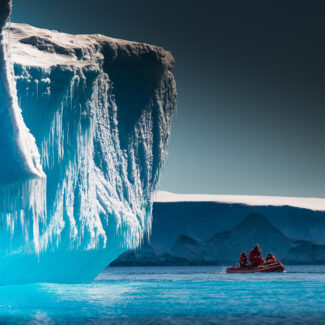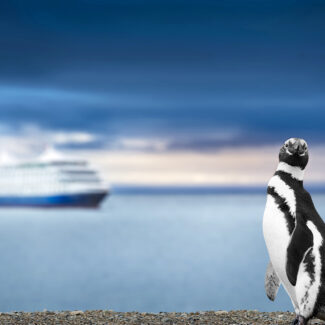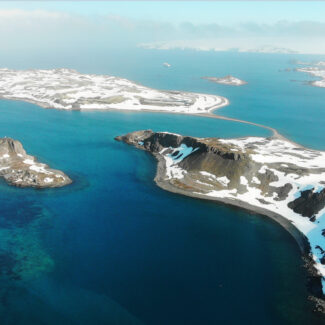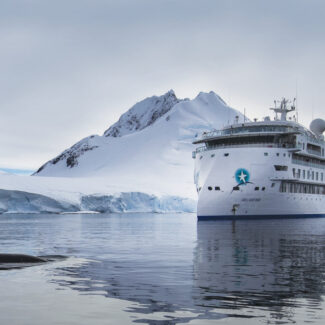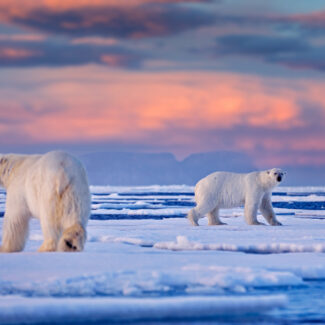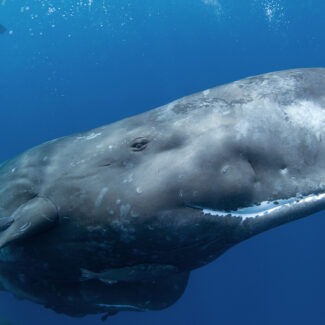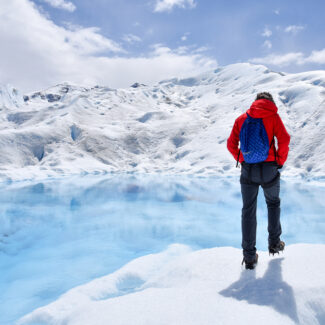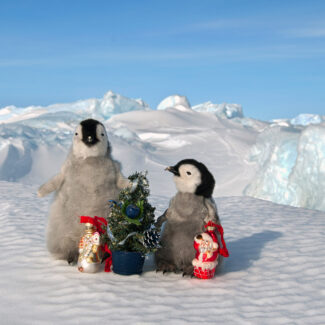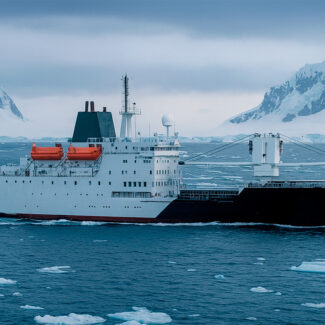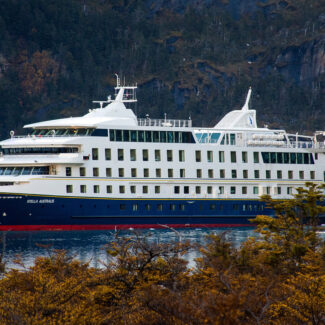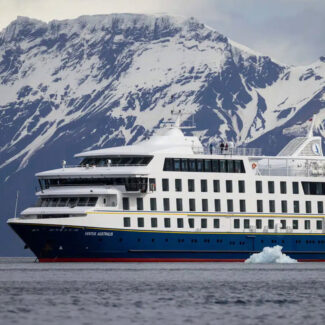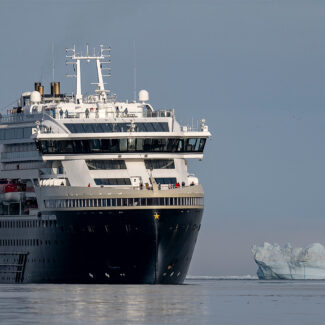
Beluga Whale Tours
Highlights
- Observe the iconic “sea canaries” in their natural Arctic environment, often in significant numbers in their social pods.
- Experience the unique sounds of belugas through hydrophones onboard.
- Learn about their adaptations for life in icy waters, including their thick blubber and flexible necks.
- Explore prime beluga habitats, often in coastal waters and estuaries in regions like the Canadian Arctic and Greenland.
- Gain insights into beluga conservation efforts and the challenges they face in a changing Arctic.
Among the most charismatic of the Arctic’s marine mammals, the beluga whale is a distinctive and delightful sight, instantly recognizable by its pure white skin and its perpetually smiling “face.” Often called “sea canaries” for their remarkable vocalizations, these highly social and intelligent creatures thrive in the Arctic’s icy waters.
A beluga whale cruise offers you the chance to delve into their world, observing them in their natural habitat as they navigate the cold seas, often in large, playful pods. From their summer feeding grounds to their unique adaptations for Arctic life, these tours provide an unforgettable immersion into the domain of one of the Far North’s most beloved inhabitants.
About Beluga Whale Tours
Among the most charismatic of the Arctic’s marine mammals, the beluga whale is a distinctive and delightful sight, instantly recognizable by its pure white skin and its perpetually smiling “face.” Often called “sea canaries” for their remarkable vocalizations, these highly social and intelligent creatures thrive in the Arctic’s icy waters.
A beluga whale cruise offers you the chance to delve into their world, observing them in their natural habitat as they navigate the cold seas, often in large, playful pods. From their summer feeding grounds to their unique adaptations for Arctic life, these tours provide an unforgettable immersion into the domain of one of the Far North’s most beloved inhabitants.
Beluga Whale Tour FAQs
Where are the best places to see beluga whales on an Arctic cruise?
Beluga whales are particularly abundant in the Canadian Arctic Archipelago and off the coast of Greenland, making these regions prime destinations for beluga whale tours. They are also known to frequent specific coastal waters and estuaries during the summer months.
When is the prime season for beluga whale sightings on an Arctic cruise?
The best time to see beluga whales is typically during the Arctic summer, from July to September. This period coincides with the melting of sea ice, allowing them to move into warmer coastal waters and estuaries where they often gather in large numbers for feeding and calving.
What unique characteristics make beluga whales special to observe?
Beluga whales are unique for their all-white coloration, their flexible necks which allow them to turn their heads, and their remarkable vocalizations, earning them the nickname “sea canaries.” Observing their playful interactions and communication within their pods is a truly special experience.
Will I be able to hear beluga whales on a cruise?
Many beluga whale tours aim to enhance the experience by utilizing hydrophones (underwater microphones) from the ship or Zodiacs. This allows guests to listen to the distinct whistles, clicks, and calls of the “sea canaries,” offering an incredible auditory insight into their underwater world.
How close do beluga whale tours get to the whales, and is it regulated?
Tours adhere to strict wildlife viewing guidelines to ensure respectful and safe distances are maintained, preventing disturbance to the whales. While close encounters are possible, the focus is always on observing belugas in their natural habitat without interference, prioritizing their well-being.
What other wildlife might I see on a beluga whale cruise?
Beyond belugas, these cruises operate in rich Arctic ecosystems. Depending on the specific route, you might also spot other marine mammals like seals, narwhals, bowhead whales, and polar bears. Various seabirds and land mammals like Arctic foxes can also be seen.
Beluga whales are particularly abundant in the Canadian Arctic Archipelago and off the coast of Greenland, making these regions prime destinations for beluga whale tours. They are also known to frequent specific coastal waters and estuaries during the summer months.
The best time to see beluga whales is typically during the Arctic summer, from July to September. This period coincides with the melting of sea ice, allowing them to move into warmer coastal waters and estuaries where they often gather in large numbers for feeding and calving.
Beluga whales are unique for their all-white coloration, their flexible necks which allow them to turn their heads, and their remarkable vocalizations, earning them the nickname “sea canaries.” Observing their playful interactions and communication within their pods is a truly special experience.
Many beluga whale tours aim to enhance the experience by utilizing hydrophones (underwater microphones) from the ship or Zodiacs. This allows guests to listen to the distinct whistles, clicks, and calls of the “sea canaries,” offering an incredible auditory insight into their underwater world.
Tours adhere to strict wildlife viewing guidelines to ensure respectful and safe distances are maintained, preventing disturbance to the whales. While close encounters are possible, the focus is always on observing belugas in their natural habitat without interference, prioritizing their well-being.
Beyond belugas, these cruises operate in rich Arctic ecosystems. Depending on the specific route, you might also spot other marine mammals like seals, narwhals, bowhead whales, and polar bears. Various seabirds and land mammals like Arctic foxes can also be seen.


